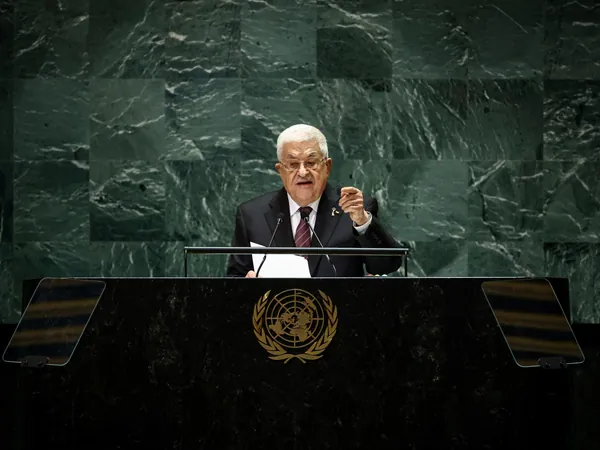
Tensions Soar as Russian Jet’s Dangerous Close Encounter with U.S. Fighter Sparks Outcry
2024-10-01
Overview of the Tensions
Last week, a dramatizing incident off the coast of Alaska has left military and political leaders on both sides of the North American border visibly shaken. The North American Aerospace Defense Command (NORAD) has released a video capturing the moment when a Russian Su-35 jet veered alarmingly close—reportedly within mere feet—of a U.S. Air Force F-16. The event is raising concerns about increasing aggressive military posturing in the region.
Video Evidence of the Encounter
Captured on September 23, the video illustrates the Russian aircraft rapidly approaching from behind the U.S. fighter jet before buzzing past its nose. The American pilot was forced to maneuver abruptly to avoid a potential collision, highlighting the risks involved in such close encounters. General Gregory Guillot, commander of NORAD, condemned the Russian pilot’s actions as both “unsafe” and “unprofessional,” stating that they posed a danger to everyone involved.
Context of the Incident
NORAD explained that this incident followed the detection and tracking of four Russian military aircraft entering the Alaska Air Defense Identification Zone (ADIZ)—a critical buffer zone that, while technically international airspace, serves as a protective measure for American and Canadian territories. Aircraft passing through this zone are required to identify themselves and declare their planned routes.
Increase in Russian Military Activity
Though NORAD affirmed that the Russian jets did not enter either American or Canadian sovereign airspace, concerns are mounting due to an uptick in Russian military activity in the Alaska ADIZ this year. A spokesperson noted that there have been 11 documented encounters so far in 2023, compared to previous years where incidents fluctuated between zero and 15 in a single year.
Political Reactions
U.S. Senator Dan Sullivan, representing Alaska, has been particularly vocal in response to the incident. Following the release of the video, he decried the Russian pilot’s reckless maneuvers and urged the U.S. to bolster its military assets in Alaska. “These dangerous actions put our brave airmen’s lives at risk and are indicative of the escalating aggression from authoritarian leaders like Vladimir Putin,” he said, asserting the need for a strong military presence to counter such provocations.
Calls for Military Enhancements
Sullivan emphasized that it's crucial for the U.S. to respond decisively, advocating for enhanced military infrastructure in the Arctic, including the development of strategic locations such as the Arctic port at Nome and the potential reopening of the Adak Naval Air Facility.
Broader Context of Tensions
The rising tensions are not limited to the skies over Alaska. Just days prior to the September 23 event, NORAD detected multiple Russian incursions into the ADIZ, with aircraft observed on four separate occasions within a week. Furthermore, on September 16, the U.S. Coast Guard tracked four Russian naval vessels, including submarines, transiting through the U.S. Exclusive Economic Zone off the coast of Alaska, reinforcing the need for heightened vigilance.
Comparisons with Past Incidents
Incidents like these have drawn parallels to previous confrontations, including a 2022 occurrence where a Chinese military jet dangerously intercepted a Canadian Armed Forces plane in international airspace. Such provocative maneuvers raise significant questions about international air safety and draw attention to the evolving nature of geopolitical tensions across both air and maritime domains.
Looking Ahead
With defense experts urging for a cohesive strategy to address these escalating threats, it remains to be seen how the U.S. and its allies will respond to the growing assertiveness of Russian military forces in the Arctic region. The stakes are high, and the potential for dangerous encounters looms large as military activities increase.









 Brasil (PT)
Brasil (PT)
 Canada (EN)
Canada (EN)
 Chile (ES)
Chile (ES)
 España (ES)
España (ES)
 France (FR)
France (FR)
 Hong Kong (EN)
Hong Kong (EN)
 Italia (IT)
Italia (IT)
 日本 (JA)
日本 (JA)
 Magyarország (HU)
Magyarország (HU)
 Norge (NO)
Norge (NO)
 Polska (PL)
Polska (PL)
 Schweiz (DE)
Schweiz (DE)
 Singapore (EN)
Singapore (EN)
 Sverige (SV)
Sverige (SV)
 Suomi (FI)
Suomi (FI)
 Türkiye (TR)
Türkiye (TR)